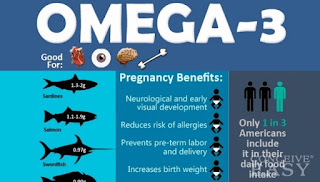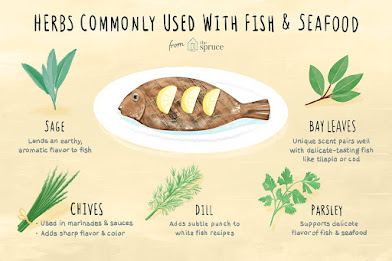Bringing Seafood to the Table
Seafood Recommendations by Stage of Life
Children:
Omega-3 fatty acids are essential for a developing brain, nervous system, and vision.
· 2 – 3 years of age: 1 – 2 oz per week
· 4 – 7 years of age: 2 – 4 oz per week
· 8 – 10 years of age: 3 – 6 oz per week
· 11+ years of age: 4 – 8 oz per week
Women of Child-Bearing Age:
Omega-3’s are essential for fetal development; therefore, seafood recommendations are increased during this stage of life.
· 8 – 12 oz per week
Adults:
Consuming adequate seafood each week has been shown to reduce the risk of developing primary and secondary cardiac deaths. Additionally, seafood consumption has been linked to reduce cognitive decline in the elderly population.
· 8+ oz per week
Bringing Seafood to the Table
1. Think beyond dinner and main dishes
a. Use seafood as a topping on pizzas, burritos, or tacos
b. For breakfast, frittatas and crab and egg muffins!
c. For snacks, tuna and sushi are common go-to choices
2. Budget-friendly
a. Canned and frozen seafood can be just as nutrient-packed and beneficial as fresh seafood!
3. Pickiness
a. Experiment with different flavors and spices
b. Start off with neutral fishes such as cod, tilapia and shrimp (cod alfredo or buttered filets)
4. Seafood Intimidation
a. Try simple combinations such as cod topped with melted butter, bread crumps and lemon juice, haddock mac and cheese, or cod and bacon with veggies
b. Simply swap other animal proteins for seafood (pulled pork à smoked salmon)
Seafood Safety/Myths:
1. Mercury
a. The recommendation of choosing low-mercury foods is for pregnant or breastfeeding women, and children.
i. Examples of seafoods high in omega-3’s but low in mercury include anchovies, sardines, salmon, oysters, and trout.
b. Consumed in excess
i. Mercury may be harmful if consumed in excess because it could disrupt advantageous effects of selenium
2. Selenium
a. Many get worried or intimidated by possible consumption of selenium, but selenium has many benefits. These include:
i. Assisting in brain function
ii. Reverse the potential adverse effect of mercury
b. Eating seafood high in selenium compared to mercury creates a defense system against mercury
i. To our advantage, the majority of seafoods have much higher amounts of selenium than mercury






Great content! I often find myself falling into the routine of only consuming tuna or salmon and forgetting about all the other seafood varieties available. Its always great to be reminded why it is so important to consume seafood on a regular basis! -AS
ReplyDeleteI liked how you brought up "pickiness" in relation to seafood. How many times have we heard people say they hate seafood because they do not like the taste? Like you mentioned, experimentation is the most important thing they can do - try adding different spices and ingredients and see what works best. We live in the internet age too, so there really is no excuse why people can't Google recipes they think will taste good (thereby taking the stress off them for coming up with combinations). Great job!
ReplyDelete